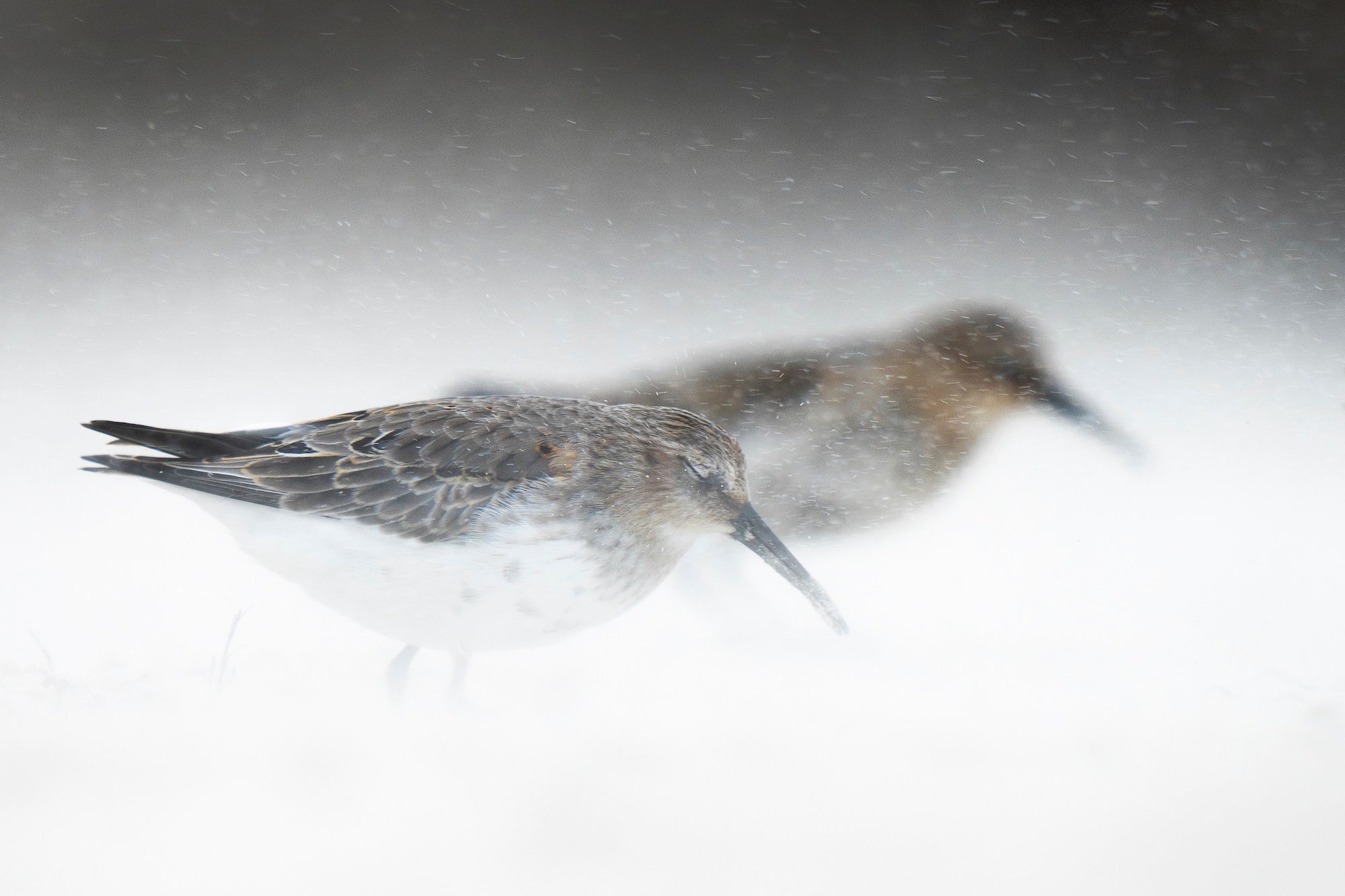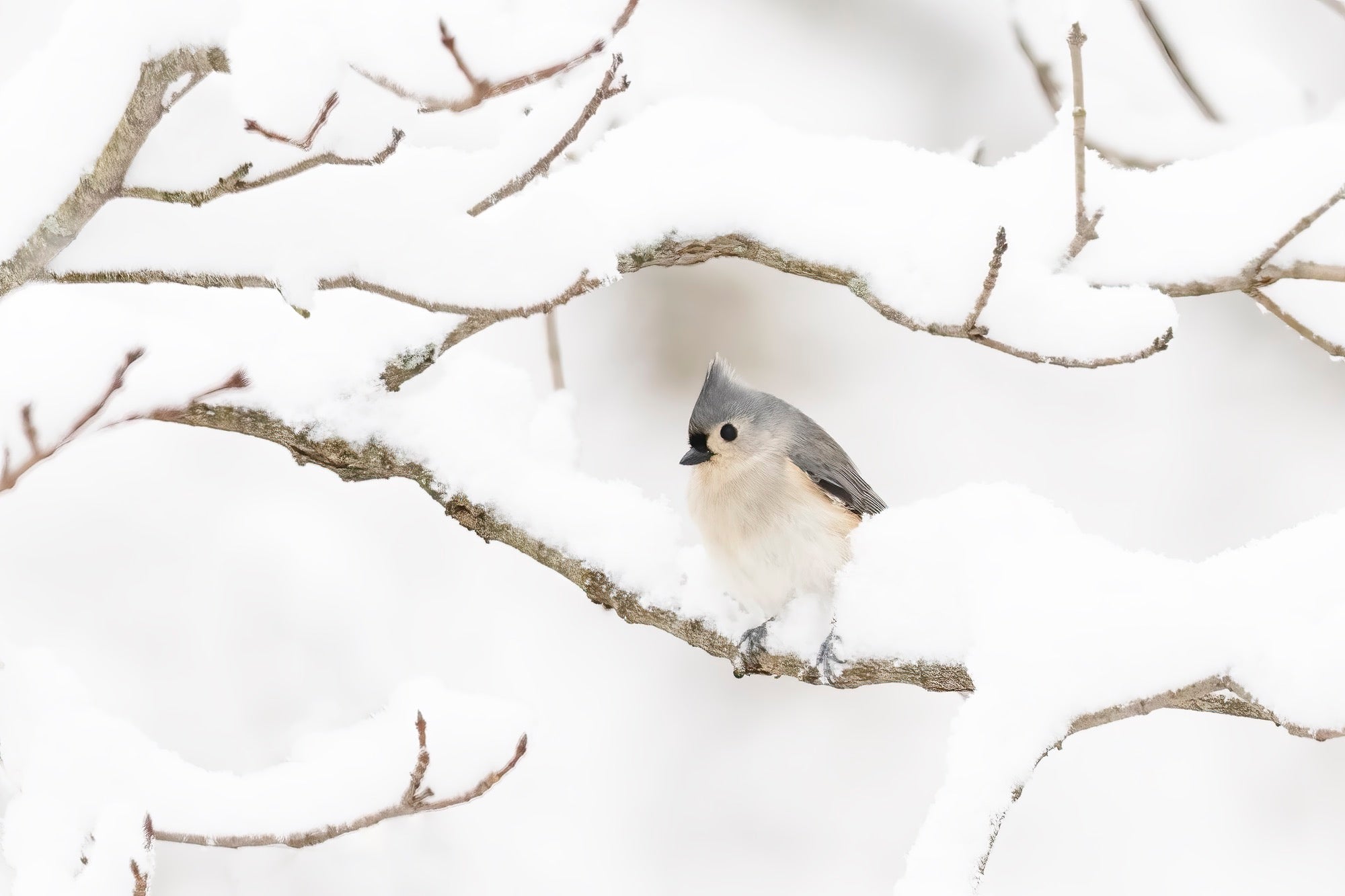Winter bird photography offers unique challenges and stunning rewards, as the season brings opportunities to capture birds in beautiful, snow-covered landscapes. Check out these tips to help you get the most out of your winter birding adventures.
1. Dress Warmly & Comfortably
If you want to get the shot, you have to brave the cold. Winter bird photography often requires spending long periods outdoors in cold conditions. Dress in layers for warmth and comfort, ensuring you have a good pair of insulated boots and gloves that allow you to operate your camera. Staying comfortable will help you focus on your photography rather than the cold.

Photo By Levi Fitze. Sony Alpha 7R IV. Sony 400mm f/2.8 G Master. 1/1250-sec., f/2.8, ISO 125
2. Research & Plan Your Locations
Before heading out, research locations where winter birds are known to gather. Look for local parks, nature reserves or even backyard feeders that attract a variety of species. Planning your shoots around these spots will increase your chances of capturing diverse and interesting subjects.
3. Use The Right Gear
Birds are quick, and so your camera needs to be as well. The Sony Alpha 9 III is a lightning-fast option with features like Subject Recognition, Global Shutter and Pre-Capture to maximize your changes at capturing the perfect moment. Read why wildlife photographer Joe Tavares loves it for bird photography in See This Photographer's Winning Setup For Birds & Wildlife.
A telephoto lens is also essential for bird photography, allowing you to get close-up shots without disturbing the birds. Consider using a lens with a focal length of at least 300mm, like the Sony 300mm f/2.8 G Master, Sony 400mm f/2.8 G Master, Sony 600mm f/4 G Master. Equip your camera with a sturdy tripod or monopod to stabilize your shots, especially in low-light conditions.
4. Understand Bird Behavior
Observing bird behavior will help you anticipate their movements and capture more dynamic images. Spend time watching their feeding habits, flight patterns and interactions with each other. This knowledge will allow you to be ready for action shots, such as take-offs or mid-flight captures.
5. Adjust Your Camera Settings
In winter, lighting conditions can be tricky. Use a fast shutter speed to freeze motion, especially in flight shots. Set your ISO to a higher setting to compensate for reduced light and maintain a sharp image. Experiment with exposure compensation to ensure your images are properly exposed, particularly in snowy environments where the camera might underexpose.
6. Capture The Winter Environment
Incorporate the winter landscape into your compositions to add context and interest to your bird photographs. Snow-covered branches, frosty backdrops and muted winter colors can enhance the mood and story of your images. Use the rule of thirds to position the bird and its surroundings in a balanced and pleasing way.

Photo by Melissa Groo. Sony Alpha 1. Sony 600mm f/4 G Master. 1/640-sec., f/5.6, ISO 1600
7. Be Patient & Persistent
Bird photography requires patience. You may need to wait quietly for extended periods to get the perfect shot. Be persistent and ready to adapt to changing conditions. With practice and dedication, you'll develop the skills to capture beautiful winter bird images that showcase the season's unique charm.
These basic tips will help get you started in winter bird photography. Get even more tips from Sony Artisan Melissa Groo in Master Winter Bird Photography With These Tips From A Wildlife Pro.
Explore more about bird photography on AlphaUniverse.com and in our Alpha Universe Community Forums. Share your own Sony winter bird photos using #SonyAlpha.



